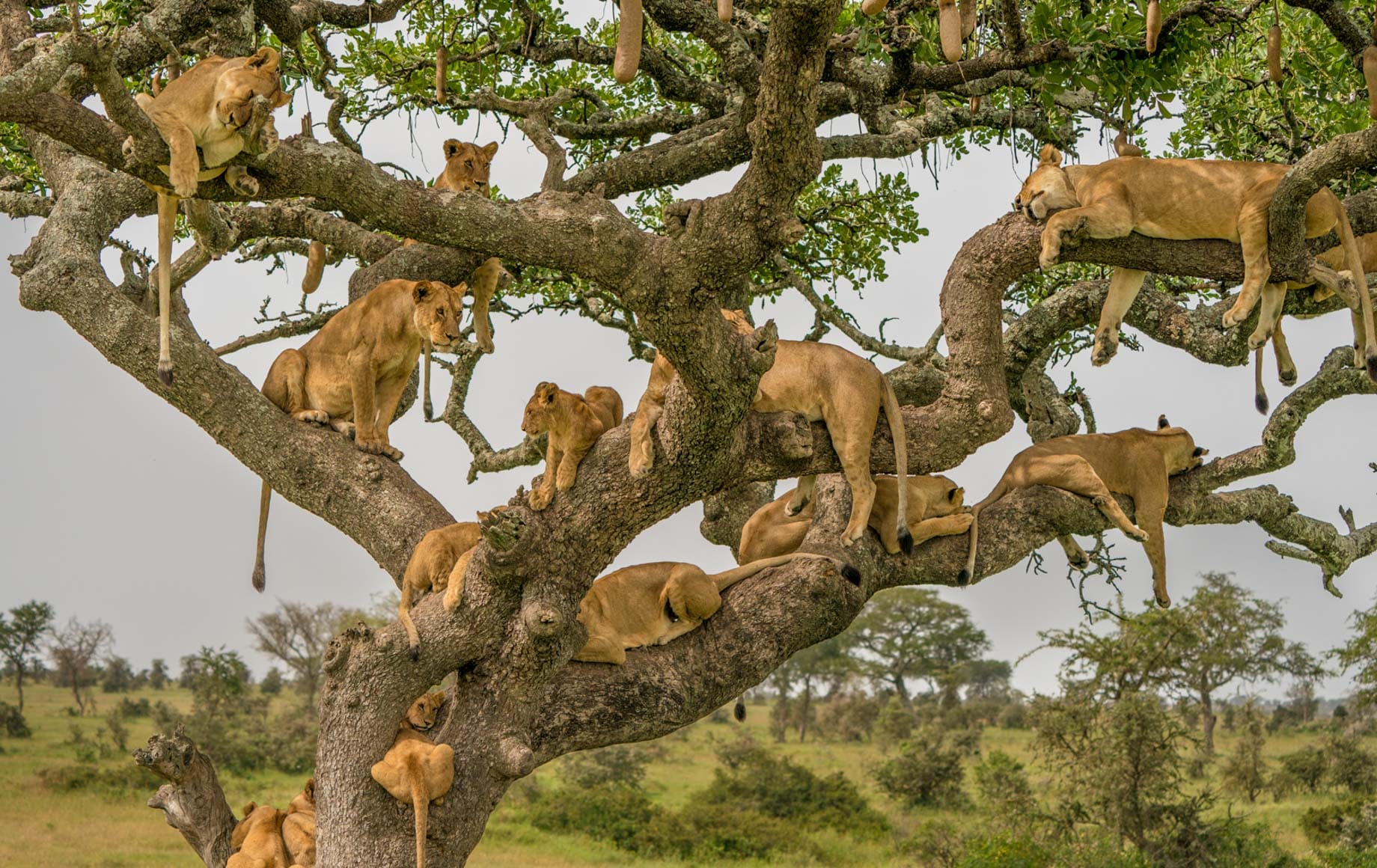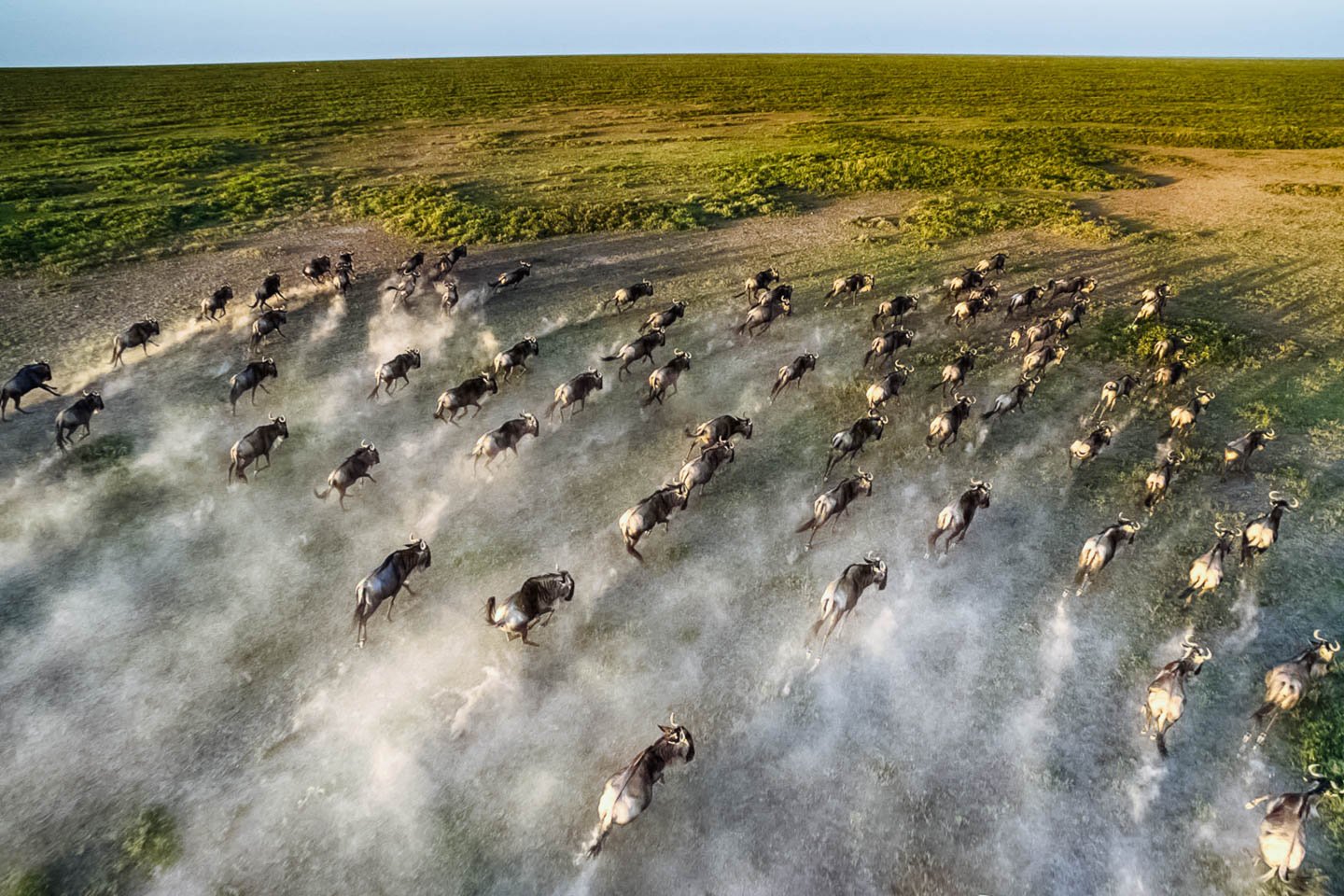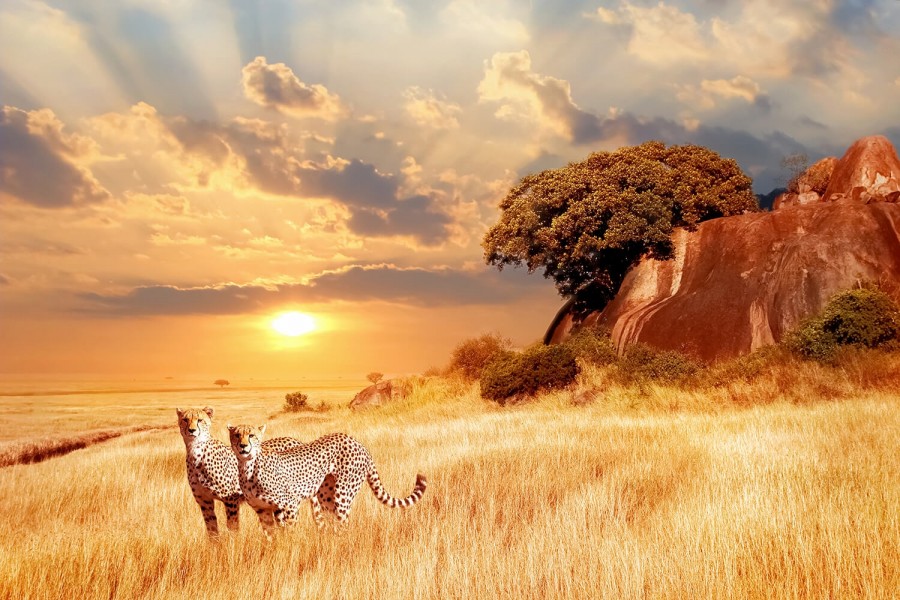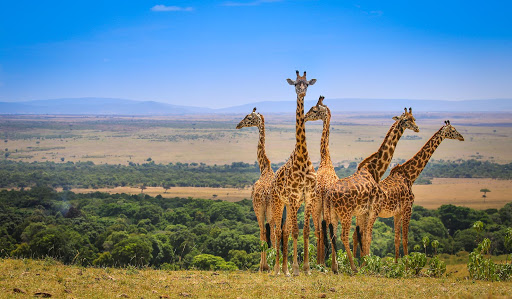
Home of The Great Migration
Covering tens of thousands of square kilometers, this is one of Tanzania’s largest parks, a symbol of African wildlife and primeval beauty. In the Masai language, the name Serengeti means ‘endless plains’. Huge herds of Wildebeest and Zebra dominate the park and their seasonal migration to and from Masai Mara in Kenya provide an unequalled wildlife spectacle. The predator population cannot be overlooked. Naturally, with such a big number of the plains game providing a sufficient food supply, the predators thrive here. It is not unusual to see 40 or more lions in a day’s game viewing.
The larger area of Serengeti is covered by vast open plains with lofty rocky outcrops, called Kopjes. The other areas are covered by acacia, savannah woodland, scrub, forested and mature treed rivers, an occasional swamp and small lakes ‘here and there’. The park ranges in altitude from 910 meters up to 1,820 meters. True eye-catching beauty, immortalized in the film “Serengeti shall not die.”




